How Many Times Can You Have Radiofrequency Ablation?
Posted November 17, 2025 in Radiofrequency Ablation

This blog discusses radiofrequency ablation, a popular, minimally invasive treatment for Morton’s neuromas, including how the procedure works, how long it lasts, and how many treatments might be needed.
5 Min Read:
Table of Contents
- What Is Radiofrequency Ablation?
- What Is the RFA Treatment Like?
- How Long Do RFA Results Last?
- Can RFA Treatments Be Repeated?
- Radiofrequency Ablation at Chelsea Foot and Ankle
- Is RFA Right for Me?
What Is Radiofrequency Ablation?
Radiofrequency ablation is a medical procedure used to treat various conditions related to nerve pain and inflammation, such as Morton’s neuroma. A Morton’s neuroma is an area of inflammation, swelling and thickening of the nerve between the metatarsal bones in the foot. This damaged nerve is often treated conservatively with the use of orthotics, NSAIDs, or corticosteroid injections. However, Morton’s neuromas can be quite painful, and conservative methods might not be effective for advanced cases.
Radiofrequency ablation (RFA) is a minimally invasive procedure that uses heat to target and damage the afflicted nerve bundle, providing long-term relief.
Dr. Shastri is our experienced RFA provider and podiatric surgeon, treating Chelsea Foot and Ankle patients who suffer from painful Morton’s neuromas.
Dr. Shastri has been specifically trained in the administration of RFA treatments, achieving great success for her patients. The benefits of RFA treatments include:
- Minimally invasive
- Quick recovery
- Precise treatment
- Reduced trauma to the surrounding tissues
- Short treatment time
- No general anesthesia
- High success rate
What Is the RFA Treatment Like?
Each patient is different, and Dr. Shastri will tailor her approach to each person’s unique needs. Generally, though, the RFA treatment may look like the following:
- Dr. Shastri begins by administering a local anesthetic to the treatment area.
- Next, she uses an ultrasound to accurately pinpoint the neuroma’s location and display it on a screen. This minimizes trauma to the surrounding tissues and ensures accuracy.
- Then, she uses a specialized probe to deliver radiofrequency energy to the affected area, damaging the selected nerve.
- Typically, the RFA procedure takes less than an hour to complete.
How Long Do RFA Results Last?
In most cases, results after RFA are permanent. This is because an effective treatment accurately targets the nerve, damaging it and causing the pain to cease. However, there is a small chance of recurrence, although not from the same nerve. Nerves can grow back after several months, and if you continue to have the same conditions that can irritate the nerve, your condition can return.
What Is Recovery After RFA Treatment Like?
Part of the benefit of this minimally invasive procedure is that it requires very little downtime and recovery. Immediately after your procedure, the area will be lightly bandaged to protect the insertion site of the probe.
We recommend that patients should rest for 24 hours after the procedure and ice and elevate the treated foot. As you recover, avoid walking long distances and high impact activities.
Recovery from RFA is unique to the patient and their natural healing process. You can gradually incorporate physical activity, like working out and running, as your body heals. Generally, when you no longer have pain or swelling at the treatment site, you are allowed to return to physical activity. But if you try it and you experience discomfort, listen to your body and give yourself more time. Dr. Shastri will provide individualized instructions for you to follow based on your specific activity level.
RFA recovery is typically quite manageable, with most patients back to most activities within 2-4 weeks after treatment. However, it is important that you do not rush the process, or you may take longer to recover. If you ever have any questions or issues during your recovery, you can call the office and speak with Dr. Shastri.
Can RFA Treatments Be Repeated?
Absolutely, although the frequency depends on the number of prior treatments, the severity of your pain, and the advice of your doctor. Generally, patients should wait at least 2 months between treatments, as it can take 2-3 months to determine whether the initial RFA was effective.
Additionally, it takes several months for nerves to regrow, so if your neuroma recurs, you may be able to undergo treatment again.
The most effective treatment may be a combination of RFA and conservative methods, such as changing shoes or using custom orthotics to prevent future issues.
Radiofrequency Ablation at Chelsea Foot and Ankle
At Chelsea Foot and Ankle, our experienced podiatrists often recommend conservative treatments for a variety of foot conditions, including Morton’s neuroma. Before determining if you are a candidate for RFA treatment, our team may begin utilizing other treatments such as:
- Injections
- Orthotics
- Medication
RFA for Morton’s neuroma is generally an ideal procedure for those who need treatment a step above conservative, noninvasive treatments, but who don’t quite want to undergo full surgery. Candidates include those who:
- Have persistent foot pain attributed to neuromas
- Do not want surgery
- Are generally in good health
- Do not have conflicting health concerns
Is RFA Right for Me?
The best way to determine if RFA is the best procedure to help treat your Morton’s neuroma is to schedule a consultation with Dr. Shastri. She will discuss prior treatments you’ve had, your medical history, and your current pain level before suggesting the optimal treatment for you. Each patient receives highly customized procedures and boutique care at Chelsea Foot and Ankle, ensuring a positive and enjoyable experience.
Want to Learn More About Radiofrequency Ablation for Neuromas in NYC?
Call Chelsea Foot and Ankle at (646) 929-4149 or fill out the contact form to request a consultation and get started treating your Morton’s neuroma today.
